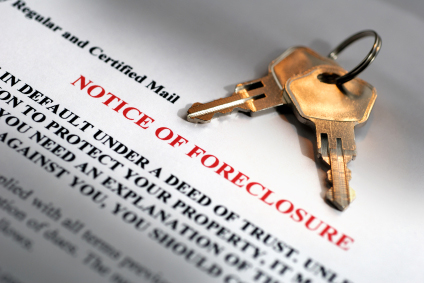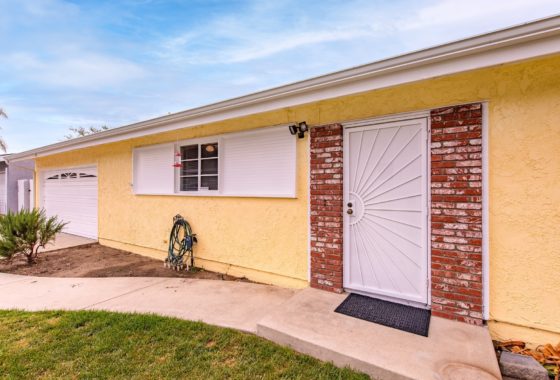 California foreclosure time frames. How much time do you have before foreclosure? The following information will outline issues you should be concerned with if you are facing foreclosure in the state of California. If you have any questions, please use the comments below, I’ll be happy to help where I can.
California foreclosure time frames. How much time do you have before foreclosure? The following information will outline issues you should be concerned with if you are facing foreclosure in the state of California. If you have any questions, please use the comments below, I’ll be happy to help where I can.
In the state of California, loans against real property are secured typically by a Deed of Trust. This benefits both the consumer and the lender with a very specific process for the lender to recover the property in the event the borrower defaults on their obligation. This also protects the consumer (borrower) with a set procedure and rights to redeem or cure their loan if and when the borrower default. This process is consumer friendly as it limits the recourse/deficiency rights of the lender.
Here are some the terms be familiar with:
Beneficiary – the lender.
Trustor – the borrower.
Trustee – third-party that holds the title in trust until the loan is repaid.
Power of Sale Clause – contained in most California real property loan documents that gives the Trustee the ability to recover or sell the property for the Beneficiary if the Trustor defaults.
Non-judicial foreclosure – the Power of Sale Clause in gives a Trustee the ability to recover or sell the property without going to court.
Purchase money – money borrowed to purchase real property which is secured by Deed of Trust.
One Action Rule – the California Deed of Trust system and its Non-judicial Foreclosure proceedings create a One Action Rule on most properties, meaning that once the Trustee Sale occurs the beneficiary has no deficiency rights against the Trustor. This is typically true for Purchase Money Trust Deeds. Refinance and home equity line of credit (HELOC) money secured by deeds of trust typically contain deficiency rights against the Trustor.
I’m going to give the typical outline and some time lines of a California foreclosure; however because of the current market & economic conditions (2010), the banking system is not following the exact procedures as they try to deal with large inventory of non-performing loans. The Federal government and the banking industry is trying everything in their power not to flood the market with foreclosed inventory, so we are seeing delayed foreclosure proceedings. If you are a borrower facing foreclosure, do not count on delays even if you hear stories of other borrowers staying in homes for a year without making payments. Once the Notice of Default is filed, you could lose your home if you do not take the necessary steps to cure the default and/or protect your rights.
Typically when the borrower defaults on their payments, the lender will wait till the borrower is approximately 90 – 120 days behind in payments before starting the foreclosure process. There is nothing stopping them from starting at 60 days or at 31 days, however I believe because the ability for the borrowers to cure the default and the cost for the lender to foreclose and sell the property; lenders typically try to see if they can get the borrowers to catch up before starting the foreclosure process. The lenders are not in the property management business or property ownership business, they are far better off if they can get the borrower to cure the default and continue making payments.
Once the lender has determined that they must move forward the foreclosure process, the first step is that the lender contacts Trustee and instructs the Trustee to issue a Notice of Default. The default is recorded, mailed and sent certified mail to the borrower. This starts a 90 day period in which the borrower can bring the loan current and stop the foreclosure proceedings. To bring the loan current, the Notice of Default typically contains past due amounts, penalties, late fees and legal fees. At the end of the 90 day period, a 20 day notice of sale is recorded, mail to the borrower, posted on the property and is to be published to notify the general public of the upcoming sale auction. The sale cannot occur until 21 days after the publication. This is why when you ask most people how long does the foreclosure process take, figure approximately 120 days rather than 110 days. I guess if the trustee and the lender is organized enough, they can coordinate the publication to occur quicker but that would be the exception rather than what would happen in the normal course of business. In either case if you have defaulted on your loan, any mail or notices delivered to you or posted to discuss your loan being in default or your property being sold should be taken very seriously. I would be careful in ignoring certified mail as you may need the information in those notices to protect yourself.
The notice of sale will contain the date, time and location of the trustee sale, which is typically on the steps of the county courthouse where the property is located. The property will be sold highest bidder which includes the lender.
So this leads us to the question, you’re in trouble and you’re pretty sure you can’t save your home so when do you have to move out? The short answer is if you do not resist, approximately six months from the day the Notice of Default is filed. This includes the approximate 120 days it takes for the lender to get the property sold at the county courthouse plus an additional 60 days before the sheriff shows up and locks you out.
IMPORTANT: IF YOU ARE FACING FORECLOSURE, a Short Sale may be an option to slow down or pause the foreclosure process. Call me to discuss this option (805)432-7705. I have completed several Short Sales where we stopped the foreclosure with only two weeks before the sale date. This is not easy and is not guaranteed to work for every situation, but it can be worth a try. Please don’t wait till there is only a few weeks left. If you have a Notice of Default filed against your property and you cannot come up with the money to paid off the NOD, it’s time to give me a call. I have written several articles on the Short Sale process under the Short Sales category of this Blog. Time is an important factor with Foreclosure and Short Sales, feel free to call, your situation will be kept confidential. Several property owners I have helped did not want a for sale sign in their yard as they did not want friends and neighbors aware of their situation, we were able to sell their home and work through the process.
- Short Sale Flipping, Beware of Private Investors and Cash Buyers
- What is a Short Sale, Can I Short Sell My home?
- 3 Important Concerns with Short Sale Offers
This above post is informational only. THIS IS NOT INTENDED TO BE LEGAL or TAX ADVICE. Each situation can vary and I strongly urge you to seek the advice of an attorney and tax professional to protect your rights. Keller Williams Exclusive Properties & Ted Mackel is not associated with the government, and our service is not approved by the government or your lender. Even if you accept an offer and use our service, your lender may not agree to change your loan. If you stop paying your mortgage, you could lose your home and damage your credit rating.
Thanks for reading Simi Valley’s Premiere Real Estate Blog!
Author – Ted Mackel Simi Valley Real Estate Agent – Keller Williams Realty
Ted Mackel is a top producer at Keller Williams Realty Simi Valley,
specializing in Simi Valley Real Estate
(805) 432-7705

[…] This post was mentioned on Twitter by Ted Mackel. Ted Mackel said: New Blog Post – California Foreclosure Time Frames – How much time do you have? http://bit.ly/dAR1mJ […]